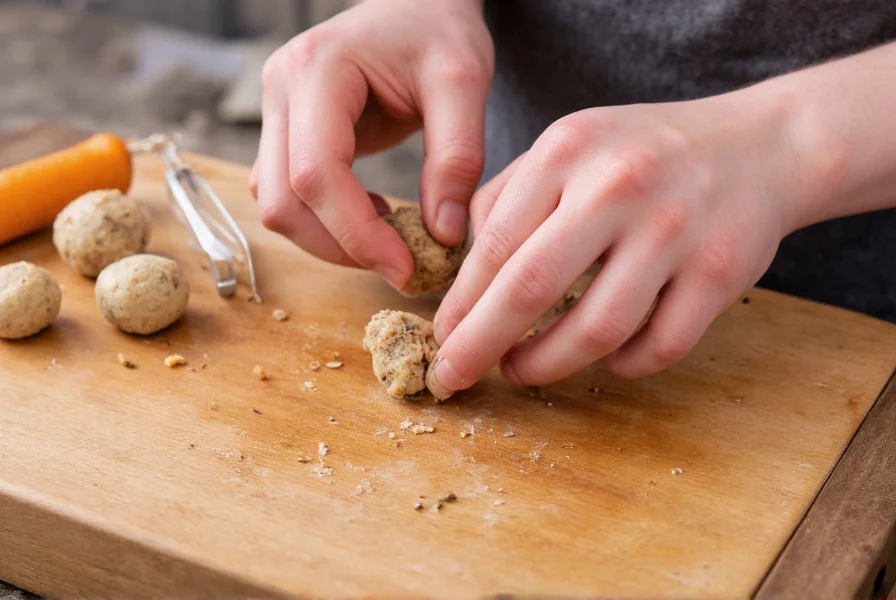For centuries, anise cookies have graced tables across Mediterranean and European cultures, from Italian biscotti di anice to Greek glyka me anison. These aromatic treats offer a sophisticated alternative to standard sugar cookies, with their distinctive licorice-like flavor creating a memorable baking experience. Whether you're new to baking with anise or seeking an improved recipe, this guide delivers professional techniques for perfect results every time.
Understanding Anise: The Secret Ingredient
Anise imparts a sweet, aromatic flavor reminiscent of licorice, but with more complexity. Two primary forms appear in baking:
| Type | Flavor Profile | Best For | Conversion |
|---|---|---|---|
| Star Anise (whole) | Earthy, warm, complex | Infusing liquids, decorative | 1 star = 1/2 tsp ground |
| Anise Seed (ground) | Sharper, more direct licorice | Dough incorporation | 1 tsp seeds = 1/4 tsp extract |
| Anise Extract | Clean, potent flavor | Precise flavor control | 1/2 tsp = 1 tsp seeds |
Professional bakers often combine forms for layered flavor—simmering star anise in milk for infusion while using extract for immediate impact. Avoid artificial anise flavoring, which creates an overwhelming medicinal taste.

Perfect Anise Cookie Recipe: Traditional Method
This time-tested recipe produces crisp, flavorful cookies with optimal texture. Yields 24 cookies.
Ingredients You'll Need
- 2 ½ cups all-purpose flour (measured correctly)
- 1 cup unsalted butter, room temperature
- ¾ cup granulated sugar
- 1 large egg
- 1 ½ tsp pure anise extract
- 1 star anise, finely ground (or ½ tsp seeds)
- ¼ tsp salt
- 1 tsp baking powder
- Zest of 1 lemon (essential for balance)
Step-by-Step Baking Instructions
- Prepare anise infusion: Grind star anise to powder using mortar and pestle. Combine with sugar and let sit 30 minutes to absorb flavor.
- Cream butter and sugar: Beat butter with anise-infused sugar until light and fluffy (5 minutes).
- Add wet ingredients: Mix in egg, anise extract, and lemon zest until fully incorporated.
- Combine dry ingredients: Whisk flour, baking powder, and salt. Gradually add to wet ingredients.
- Chill dough: Wrap in parchment and refrigerate 2 hours (critical for texture).
- Shape cookies: Roll into ½-inch balls, then roll in additional sugar. Place 2 inches apart on lined baking sheets.
- Bake: 14-16 minutes at 350°F (175°C) until golden at edges. Rotate pans halfway.
Proven Baking Techniques for Success
Avoiding common pitfalls ensures perfect anise cookies every time:
Temperature Control Matters
Butter temperature dramatically affects texture. Too warm creates flat, greasy cookies; too cold prevents proper creaming. Ideal consistency: leaves slight indentation when pressed. For consistent results, use the fingertip test—butter should bend without breaking.
Dough Chilling Science
Refrigeration serves three critical purposes:
- Allows flour to fully hydrate
- Prevents excessive spreading during baking
- Enhances flavor development as anise compounds meld
For best results, chill dough a minimum of 2 hours. Overnight chilling produces even better flavor integration.

Customization Options for Every Preference
Adapt this traditional anise cookie recipe to suit different tastes and occasions:
Dietary Modifications
- Gluten-free: Substitute 1:1 GF flour blend; add ½ tsp xanthan gum
- Vegan: Use plant-based butter and flax egg (1 tbsp ground flax + 3 tbsp water)
- Reduced sugar: Decrease to ½ cup; add 1 tbsp applesauce to maintain moisture
Flavor Variations
- Orange-anise: Replace lemon zest with orange zest
- Chocolate-dipped: Melt 4 oz dark chocolate; dip cooled cookies halfway
- Nutty version: Fold in ½ cup finely chopped toasted almonds
Storage and Serving Recommendations
Proper storage maintains texture and flavor:
- Room temperature: Airtight container for up to 2 weeks
- Freezing: Dough logs keep 3 months; baked cookies 2 months
- Serving: Pair with espresso, black tea, or Vin Santo dessert wine
For optimal texture revival, bake frozen dough slices directly from freezer—add 1-2 minutes to baking time. Stale cookies regain crispness with 5 minutes at 300°F (150°C).
Frequently Asked Questions
Can I substitute fennel seed for anise in cookies?
Yes, but use 25% less fennel seed as it's more potent. Fennel creates a slightly different flavor profile—more herbal and less sweet than anise. For best results, combine half fennel and half anise to balance the flavors.
Why did my anise cookies spread too much during baking?
Excessive spreading typically occurs from insufficient chilling, inaccurate flour measurement, or butter that was too warm. Always spoon flour into measuring cups (don't scoop), chill dough at least 2 hours, and verify your oven temperature with an independent thermometer.
How can I intensify the anise flavor without making cookies taste medicinal?
For deeper flavor without harshness, toast whole star anise in a dry pan for 2 minutes before grinding, or steep 2 star anise pods in warm milk for 20 minutes, then strain and use the infused milk in your recipe. This extracts complex flavor compounds while minimizing the bitter elements.
Are anise cookies traditionally served at specific occasions?
Yes, anise cookies feature prominently in Mediterranean holiday traditions. In Italy, they're served at Christmas as "biscotti all'anice." Greek families prepare them for New Year's as "glyka me anison" for prosperity. Their distinctive flavor makes them popular at bridal showers and christenings across Southern Europe.











 浙公网安备
33010002000092号
浙公网安备
33010002000092号 浙B2-20120091-4
浙B2-20120091-4